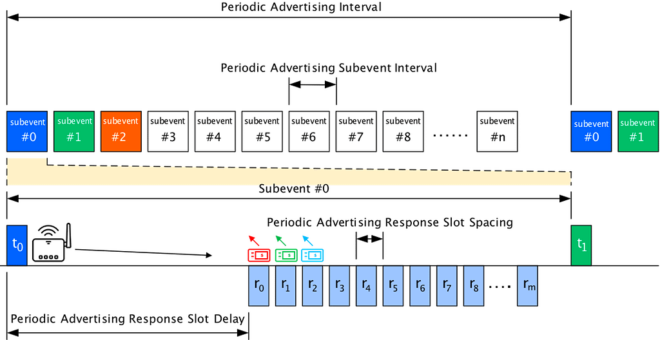One of the leading contributors to the Bluetooth® Mesh specification, Silvair has been at the forefront of Bluetooth® Mesh-based wireless lighting control solutions. Offering dedicated tools for commissioning and managing Bluetooth Mesh lighting networks in commercial spaces, SIlvair’s solutions integrate with a variety of lighting and sensing innovations from a wide range of component manufacturers.
Silvair believes that the latest advancements in wireless communication have opened up a great opportunity for reducing energy waste in commercial spaces around the globe. And that Bluetooth Mesh radically shortens the path to advanced control strategies, making them simple and affordable to every business and institution.
Last month, I had a chance to ask Rafal Han, CEO and co-founder of Silvair, some questions about the latest advancements in Bluetooth wireless lighting.
Q&A With Rafal Han

What markets and solution areas do your company support?
We support lighting manufacturers, facilitating their transition to wireless and enabling them to join a globally interoperable Bluetooth® Mesh ecosystem. For them, we’ve developed complete lighting control firmware based on our qualified Bluetooth Mesh stack that is easily integrated into a variety of devices, including drivers, fixture controllers, and sensors.
We also provide dedicated tools for ESCOs (energy service companies), building owners, and facility managers to let them unleash the full potential of connected lighting networks based on Bluetooth Mesh. These include solutions for commissioning, monitoring, and managing wireless lighting control systems. In addition, we’re developing value-added services that can be provided via Bluetooth Mesh networks, such as occupancy analytics or fine-grained energy consumption monitoring. Looking ahead, we want to move towards deeper integration with other systems and installations.
One of our major goals is to simplify the commissioning of commercial lighting installations. The process has been a real struggle so far — especially for wireless lighting control systems. Bluetooth provides some great opportunities for streamlining the whole thing, and this is what we did with our Silvair Commissioning solution. It radically simplifies and accelerates commissioning while allowing any lighting control parameters to be customized in accordance with lighting needs or energy code requirements. It automates all typical networking processes, implementing desired groups, scenarios, and sensor associations all at once for multiple devices within a zone.
Why have you chosen to use Bluetooth Mesh technology?
Bluetooth® Mesh redefines what’s possible in wireless lighting control. It is the first low-power communication standard that solves the three pain points of connected lighting systems: reliability, scalability, and simplicity.
Bluetooth Mesh…is the first low-power communication standard that solves the three pain points of connected lighting systems: reliability, scalability, and simplicity.
Wireless lighting control is an extremely challenging environment for radio technologies. More complex installations include hundreds or even thousands of nodes. Energy-efficient lighting control strategies require a constant exchange of data between luminaires and occupancy/light sensors. As a result, we’re facing significant network traffic that must be handled by a low-throughput technology. At the same time, there is a need for instant responsiveness and fully synchronous operation — because this is how traditional wired systems have always worked.
Bluetooth Mesh has a long list of unique features that allow us to meet these requirements. The most important ones include high data rate, small packet size, information-centric architecture, and concurrent multicast. On the end-user side, having Bluetooth radio in all smartphones is a huge advantage. You don’t need a gateway or any other hardware to set up or manage such a network. Everything you need is already in your pocket.
Are you currently working on any projects that use Bluetooth technology in an emerging use case or market?
Our Bluetooth® enabled technology has been used in dozens of implementations, both in the U.S. and in Europe. Some of them are small showrooms and some are full-building commercial installations. Our solutions were used in some of the biggest office and warehouse implementations of a qualified Bluetooth Mesh lighting network.
We released several brochures with details about some of the real-life implementations that feature our technology. Here [PDF] you can read about a full-building office retrofit done in Brussels throughout a single weekend. It resulted in the deployment of a 360-node Bluetooth Mesh lighting network. Here [PDF] you can learn more about how our solutions enabled a rapid retrofit of a 25,000-square-foot warehouse in Sacramento.

How do these projects benefit the market?
Bluetooth® Mesh takes lighting control to another level. It simplifies everything from commissioning to maintenance while providing unprecedented flexibility and advanced monitoring capabilities. And you can have IoT services on top of that all — beacons, asset tracking, indoor navigation, and more.
But perhaps the most important benefit is the ability to drastically shorten the path to highly efficient advanced control strategies, such as occupancy sensing or daylight harvesting. As effective as they are, their adoption remains very low. The increasingly stringent building energy codes are trying to change that, but the real change is enabled by wireless communication. With no need for control boxes, wires, and dedicated specialists, you can deploy advanced controls and slash your energy costs easier than ever before. On a global scale, this can generate enormous energy savings.
What are some of the major market challenges? And how does Bluetooth help you meet them?
The major challenge is convincing lighting professionals that wireless controls can finally work as they expect. There has been a fair amount of disappointment around radio technologies in the lighting industry over the past few years. These people need to find out that the wait is over.
Also, we need to remember that we are turning a century-old lighting control paradigm upside down. If you visit our website, you’ll find a bunch of white papers and ebooks that dive quite deep into wireless lighting control and both the opportunities and challenges awaiting there. Also, the great brand recognition and solid reputation of Bluetooth certainly help us address the concerns mentioned above.
Why is interoperability such a significant factor in the market?
Only open standards can drive widespread adoption of connected lighting systems in commercial spaces. They give customers the freedom to choose from a variety of products across different vendors, allowing them to reap all the benefits of a fully competitive market. Proprietary ecosystems are divisive, risky, and outdated. We firmly believe that with its worldwide interoperability, the Bluetooth® Mesh standard will drive the global shift towards truly efficient lighting.
Watch the video below to learn more about Bluetooth Mesh, and discover its impact on commercial spaces.




![shutterstock 1653733096[1]](https://www.bluetooth.com/wp-content/uploads/2024/03/shutterstock_16537330961-660x372.jpg)
![Periodic Advertising with Responses[1]](https://www.bluetooth.com/wp-content/uploads/2024/02/Periodic-Advertising-with-Responses1-660x345.png)



























